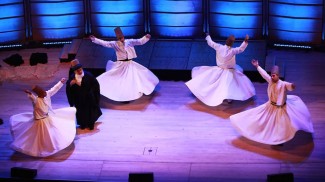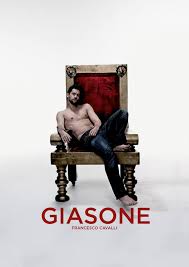Album Review: The Dying Sun/ Move Records
The Dying Sun
Madeleine Antoine, violin, Setsu Masuda, piano
Move Records
Move RecordsMove Records new album release The Dying Sun takes its name from the only work on the disc, a four-movement, approximately half-hour piece for violin and piano, billed as a sonata. Written by contemporary Australian composer Rebecca Erin Smith, it is performed by violinist Madeleine Antoine and pianist Setsu Masuda. According to the liner notes, the piece is inspired by photographs of various locations in Western Australia by Andrew J. Clarke, though the work would function just as well under the title, Four Pieces for Violin and Piano.
The first movement Blood, depicting a sunset on the Kimberley Plateau, opens with a harmonic F sharp and a downwards glissando by way of introduction. A first modal harmonic space is introduced, and then another, progressing in a manner which recalls the music of Ross Edwards. The violin stays in the high register over sparse chordal appoggiaturas as piano accompaniment, though the rhythmic note values become shorter before a return to the slow tempo of the opening in the first of three ternary form movements.
The second movement Milk, depicting the Milky Way features a sudden change: piano arpeggios support violin arpeggios in quick tempo, with pizzicatos and a new chromaticism adding contrast to the previous movement. Various techniques, such as playing on the bridge and trills in both the violin and piano parts, are exploited, as are effective changes in register in call-and-response fashion. A short foray into the low register of the piano is welcome, and the whole piece could have done with more of this to provide some much-needed contrast, given how much time the piano spends in and around middle C. The opening music returns as in ternary form, before a quick ending totally in keeping with this, the strongest and most cohesive movement of the piece.
The third movement Nectar, depicting canola fields provides the greatest challenge in terms of convincing execution. It is a slow movement, with the violin part made up of a constant stream of octaves and harmonics. It relies on the harmonic series of the four strings for its effect, and the tonal centre is expectedly G throughout the movement. The piano only has a short passage in unison with the violin, but this arrives very late in what is otherwise a solo violin movement, though hardly a cadenza. Pushing this single idea to its limit stretches the listener’s interest and even a little contrast in pitch or duration would have been welcome.
The final movement Salt, depicting Sugarloaf Rock off Cape Naturaliste features steady piano arpeggios, with each note outlining a moderate pulse while also setting up the main harmonic tension of the piece: an oscillation between g minor and B Major. The violin plays a long cantabile line high above the piano, which is working in the middle register. As the music quickens, a second subject arrives in late Romantic style, featuring welcome changes of register and demonstrating Smith’s technical competence in a common practice style. After the return of the first subject in A Major however, the music ends abruptly. Given the labelling of the work as a sonata, and the interest present in the second subject, a sonata form treatment of this material would have been extremely effective, rather than yet another section in ternary form.
Antoine and Masuda play the music well, though the balance between the two instruments often had the piano as the more forward, despite it effectively playing an accompanying role throughout. The violin’s tone colour could also be thin, especially in the upper registers. They do however make a good case for The Dying Sun, which has very finely crafted moments from an undoubtedly sure compositional pen. The piece however has an at times frustrating structural homogeneity, and could do with much greater variety of register.
Stephen McCarthy for SoundsLikeSydney©
Stephen McCarthy is an emerging writer and composer from Sydney, Australia. His writings on music include a series of essays on various operas; the first of these, “A Redefinition of Opera? Lay Thoughts on Seeing Philip Glass’ Akhnaten”, was published in the UNSWeetened Literary Journal. He also won the Nan Manefield Young Writers’ Award and the Senior Poetry Prize in the Mosman Youth Awards in Literature for his poem, “On the Ellipsis”.
As a composer, Stephen’s works include: for solo piano, an Improvisation, a Sonatina and a ballet after Thomas Hardy’s novel Far From the Madding Crowd; and a setting of Robert Bridges’ “Noel: Christmas Eve, 1913” for SSATBB choir.







